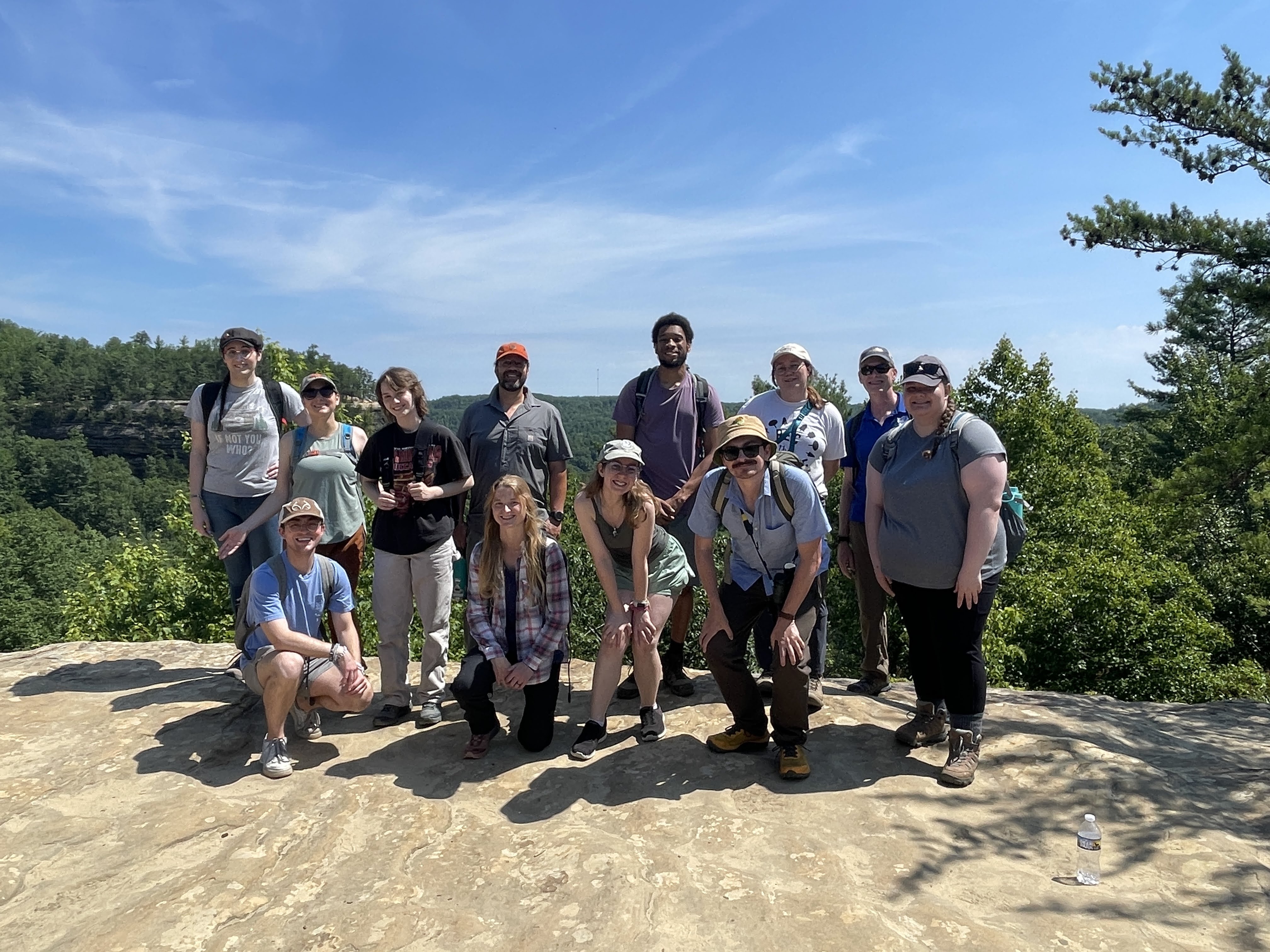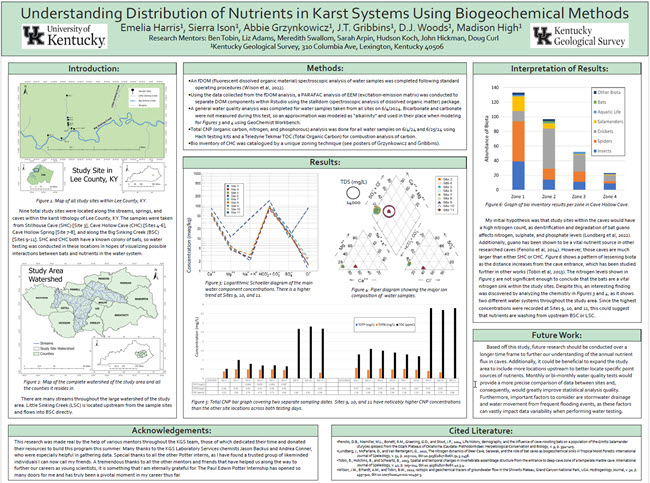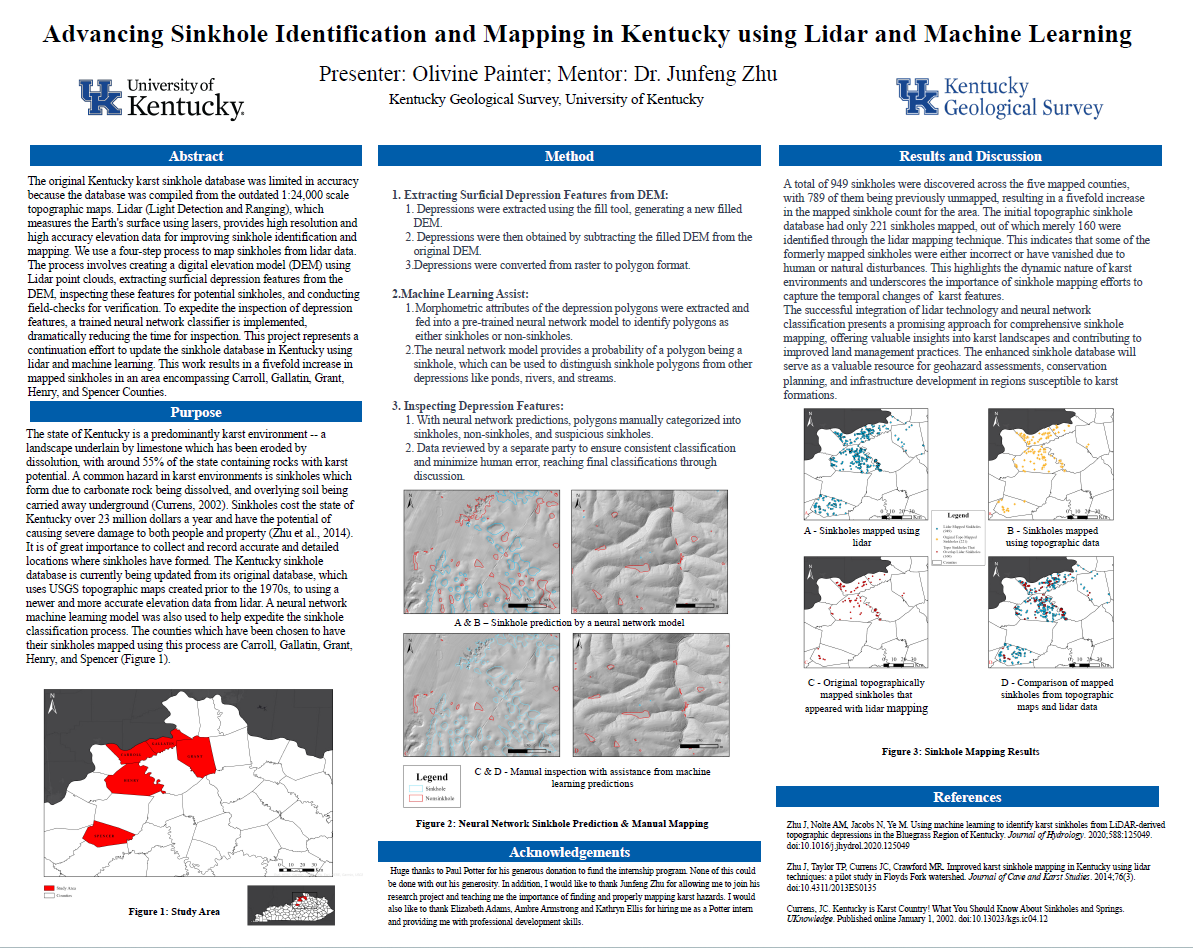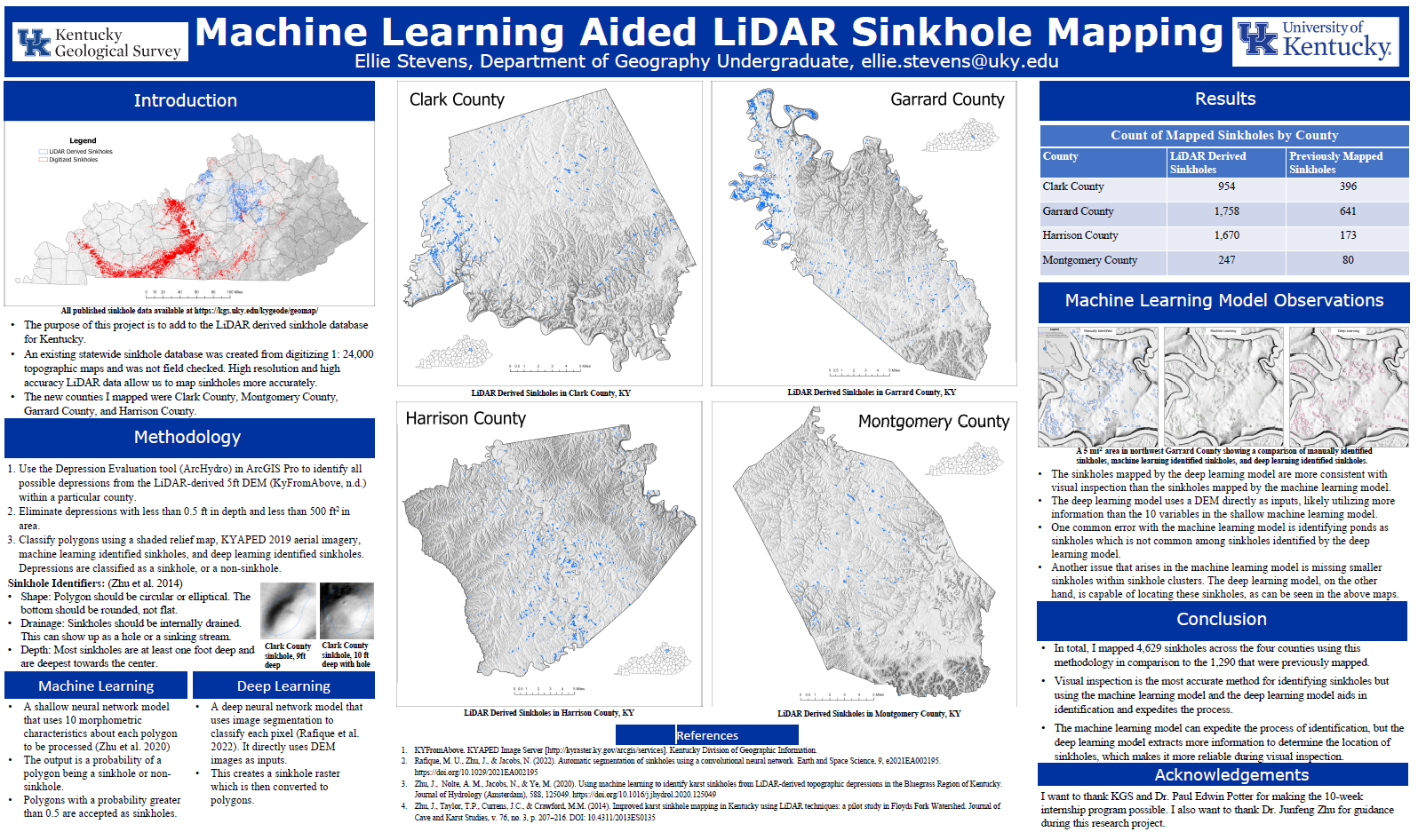The Paul Edwin Potter Internship - Past Projects
2024 Projects

1. Water storage in karst: Develop an understanding of how water moves underground
Research Question:
Are there more amounts of water stored in a Karst or Alluvium setting in Big Sinking Creek?
2. Geomorphology & water structural relationships: Develop an understanding of the relationship between structural geology and geomorphology
Research Question:
How does the structural geology of Red River Gorge impact the formation of caves in Cave Hollow?
3. Groundwater contamination issues: Develop an understanding of some potential contaminants
Research Question:
Do we see differences in dissolved organic fluorescence of Big Sinking Creek and Cave Hollow Spring?
4. Cave Habitat: Develop an understanding of the relationship between biota and geomorphology/hydrology
Research Question:
Are there any environmental factors that correlate to where species are located within the cave? (Zoning, Water Quality, Nutrients, Temperature, Humidity, and/or Turbidity)
5. Cave Habitat: Develop an understanding of the relationship between biota and geomorphology/hydrology
Research Question:
What are the ideal environmental conditions for salamanders in the cave?
6. Groundwater vulnerability modeling: Develop an understanding of where on the surface is the highest risk of contaminating the groundwater
Research Question:
What factors may affect the nutrient distribution within the cave?

2023 Projects

with KGS student employee Solomon Nketsia
Dolomitization and mineralization of the Jeptha Knob structure
Summary:
The enigmatic Jeptha Knob has intrigued researchers for a long time with various origins proposed including cryotovolcanic, cryptoexplosive, and meteorite impact origins, as well as origins related to explosive release of gases, and hydrothermal alteration associated with tectonic processes. Interestingly, dolomitization of some carbonate units is restricted exclusively to the area of Jeptha Knob. The goal of this project is to characterize these dolomites, which, in turn, will help decipher the origin of Jeptha Knob.
Machine Learning Assisted LiDAR Sinkhole Mapping
Summary:
Sinkholes are a well-known hazard in Kentucky where more than half of the land surface is underlain by carbonate rocks susceptible for sinkhole development. We propose to identify sinkholes from LiDAR-derived high-resolution elevation data with assist from a machine learning model.
Using Arc Hydro Groundwater to delineate hydrostratigraphy in the northern Mississippi Embayment, Kentucky
Summary:
Intern will use Arc Hydro Groundwater software to delineate the hydrostratigraphy of the northern Mississippi Embayment in western Kentucky.
Dye Tracing Karst Groundwater in the Daniel Boone National Forest
Summary:
The Daniel Boone National Forest has extensive karst resources along the Cumberland Escarpment. The groundwater systems have not previously been documented. The intern will work with KGS researchers to document springs, caves, and conduct dye traces to determine groundwater flow paths in the National Forest.

2022 Projects

to identify landslide features
Machine Learning Assisted Lidar Sinkhole Mapping
Summary:
Sinkholes are a well-known hazard in Kentucky where more than half of the land surface is underlain by carbonate rocks susceptible for sinkhole development. We propose to identify sinkholes from lidar-derived high-resolution elevation data with assistance from a machine learning model.
Kentucky Seismic Wave Data
Summary:
This internship with the Kentucky Seismic and Strong-Motion network will focus on using new seismic instrumentation to investigate the effects of near-surface sediments on seismic waves in the New Madrid seismic zone. The intern will assist with operating the instruments and will process, analyze, and make an initial interpretation of their recordings. This project will require two nights of overnight travel.
Paleo-fluid evolution in the Western Kentucky Fluorspar District
Summary:
Fluid inclusion analysis can provide an insight into the evolution of the mineralizing fluids and provide a better understanding of the controls of ore mineralization. The intern will work in the KGS fluid inclusion lab to collect fluid inclusion microthermometry data from rock core samples created during an ongoing critical mineral research project.
Landslide Inventory Mapping and Landslide Characterization Using a UAV
Summary:
This project proposes a comprehensive evaluation of landslide activity in the Hindman 7.5-minute quadrangle, eastern Kentucky. The primary tasks will include landslide inventory mapping, lidar-based elevation differencing, and landslide characterization using the KGS unmanned aerial vehicle (UAV).
Mapping the Geology of Environmental Justice in Kentucky
Summary:
This project will use a variety of data sources and geographic information system (GIS) software to explore the nexus between topography, geology, natural hazards such as flooding and landslides, natural resource exploitation, economics, and demographics to better understand the spatial relationship between Kentucky’s geologic legacy and environmental justice issues.
Drone-Based Aeroradiometric Mapping to Characterize Soil Radon Potential
Summary:
Radon is a naturally occurring radioactive gas that is a public health concern because it is the second leading cause of lung cancer in the United States. KGS researchers have previously shown there is a relationship between bedrock type and indoor radon levels. The intern will work with KGS researchers to expand upon that research by mapping levels of naturally occurring uranium, the parent material of radon, in soil using a drone-based gamma spectrometer and comparing the results to soil radon measurements.

Bottom Row, Left to Right: Dilni Abeyrathne, Russell Rogers, Zachary Walton
















